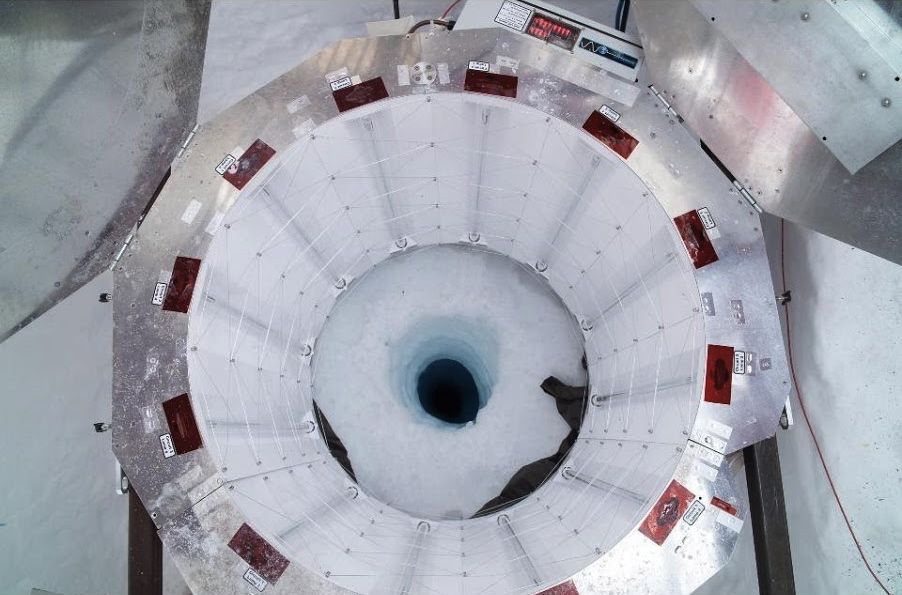The Tiny World of Glacier Microbes Has an Outsized Impact on Global Climate
Microbes living on glaciers collectively cover an area the size of New Hampshire—and they could have a big influence on global climate
/https://tf-cmsv2-smithsonianmag-media.s3.amazonaws.com/filer/b3/6e/b36e601c-c35e-4113-b20e-2da9ef95f35d/poppick_cryoconite_gallery_1.jpg)
This summer, Alex Anesio will spend three weeks surrounded by thousands of holes in an Arctic ice sheet. He and his team will camp miles from the closest settlement, surrounded by a landscape ripped apart by huge, unstable crevasses. The only way in or out is by helicopter. The scientists' soundscape will be reduced to the crunching of crampons across the ice, the rush of glacial streams and the occasional groan of a massive ice sheet rearranging itself.
“It’s like being on another planet,” says Anesio, a biogeochemist at the University of Bristol in England who has worked in the Arctic for about 15 years. “The only thing you see around you is ice.”
He and his team will spend weeks on this isolated patch of the Greenland ice sheet in order to monitor puddles that may have the power to manipulate Earth’s climate.
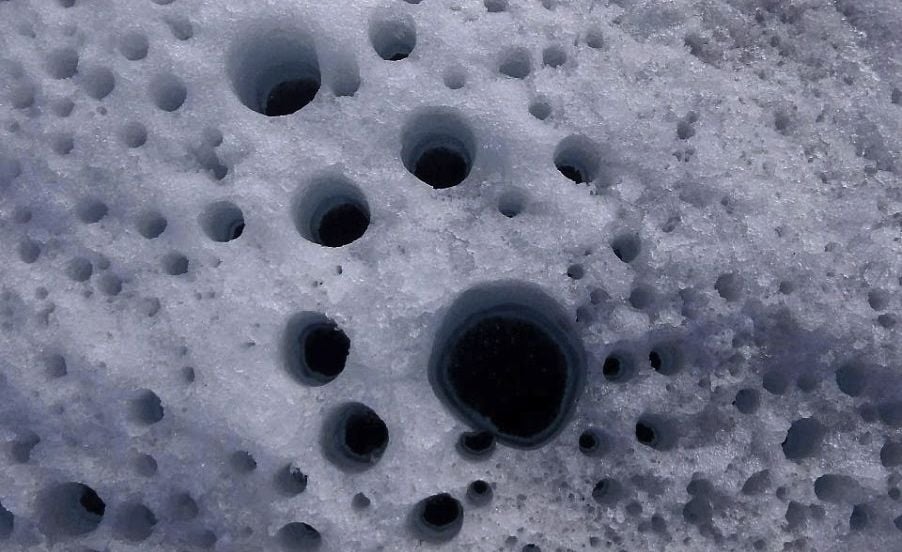
The ability to tinker with our planet's climate isn't isolated to Arctic puddles. Microbes within these small pools, and nestled in lakebed sediments buried miles beneath the Antarctic ice sheet, could harbor the ability to seriously alter the global carbon cycle, as well as the climate. And researchers have only recently begun to navigate these minuscule worlds.
The puddles that Anesio studies are called cryoconite holes—"cryo" meaning ice and "conite" meaning "dust." They develop when piles of wind-blown debris settle on the white, reflective surface of a glacier or ice sheet. Darker than the snow and ice, this debris absorbs more heat from the sun than its surroundings and causes the ice underneath to melt into cylindrical holes up to about a foot deep.
Scientists once thought these holes were devoid of life. But researchers are now finding that they actually contain complex ecosystems of microbes like bacteria, algae and viruses.
Millions of these holes, generally ranging from the width of a pencil to the width of a garbage can lid, pockmark ice sheets in a Swiss cheese-like pattern around the world. Anesio’s team has estimated that, globally, the surface area of these holes adds up to roughly 9,000 square miles. That's a little smaller than the state of New Hampshire.
As these dark, scummy ecosystems expand across the ice, they can cause what would otherwise be a reflective, cooling surface to absorb increasingly more heat from the sun. This could potentially speed up the melting of the Greenland ice sheet, the team reported in March in the journal Geochemical Perspective Letters.
But Anesio’s team has also found that organisms in these holes can have a cooling effect on the planet by actively sucking carbon dioxide out of the atmosphere through photosynthesis. In fact, when the microorganisms take enough of this greenhouse gas out of the atmosphere, the holes behave like carbon sinks.
Whether these holes help to cool or warm the planet remains to be seen. But as a warmer climate creates more holes, the balance seems to be tipping toward a net warming rather than cooling effect on the atmosphere.
Anesio and his team will work this summer to monitor the chemical and physical properties of these holes in excruciating detail to better understand how they may impact glacial behaviors and Earth’s shifting climate.
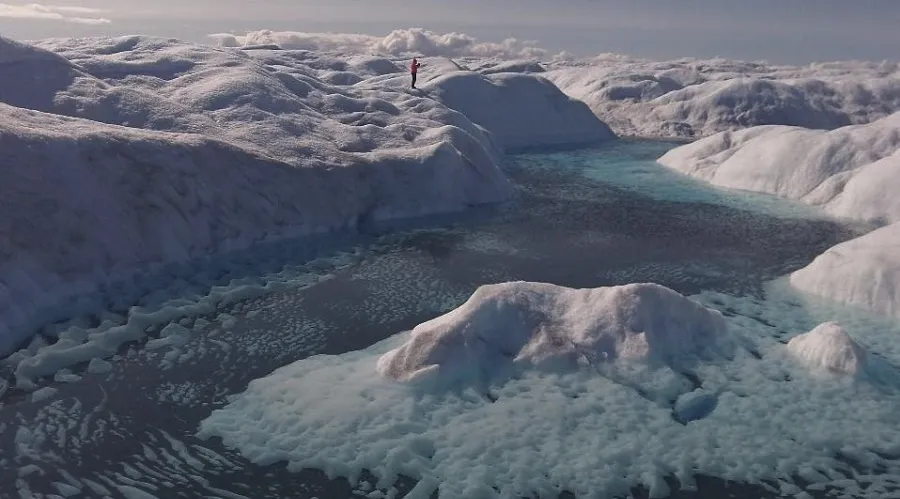
The idea that microorganisms can live on glaciers and ice sheets—let alone thrive at globally significant scales—is still relatively new to science. Until the late 1990s, researchers generally considered ice at both poles to be more or less sterile environments.
“When you look at a glacier or an ice sheet, you don’t see anything that might give you clues as to whether there is life there,” says Jemma Wadham, a colleague of Anesio’s at the University of Bristol. Biologists hadn’t really studied glacial environments until the late 1990s when the first evidence of microbial life appeared.
The previous lack of interest wasn't because of technological limits, Wadham explains. All it would have taken to find life would have been to collect meltwater from in front of a glacier and look for signs of active microorganisms. “Nobody had done that,” says Wadham. “Which sounds a bit crazy, but I guess that’s how things evolve sometimes.”
Since the '90s, there has been a surge of research exploring microbes that live on the surface of or underneath glaciers and ice sheets. In recent years, researchers have found that these microbes are far from dormant. In fact, Anesio’s team reported in a 2009 study that microbes in some cryoconite holes are as biologically active as those found in warmer soils as far south as the Mediterranean.
“That was really surprising given the low temperature and low nutrient conditions [of the environment],” says Joseph Cook, a cryoconite hole researcher at the University of Sheffield, who was not involved in that study.
Over the course of a year, this activity could cumulatively suck up as much as an estimated 63,000 imperial tons of carbon dioxide, Anesio’s team reported in the 2009 paper. That's comparable to the emissions from about 13,500 cars in a given year, he says.
"[Anesio's study] was really the first attempt to quantify the amount of carbon that was going in and out of these systems, which was a huge step and very important,” says Cook.
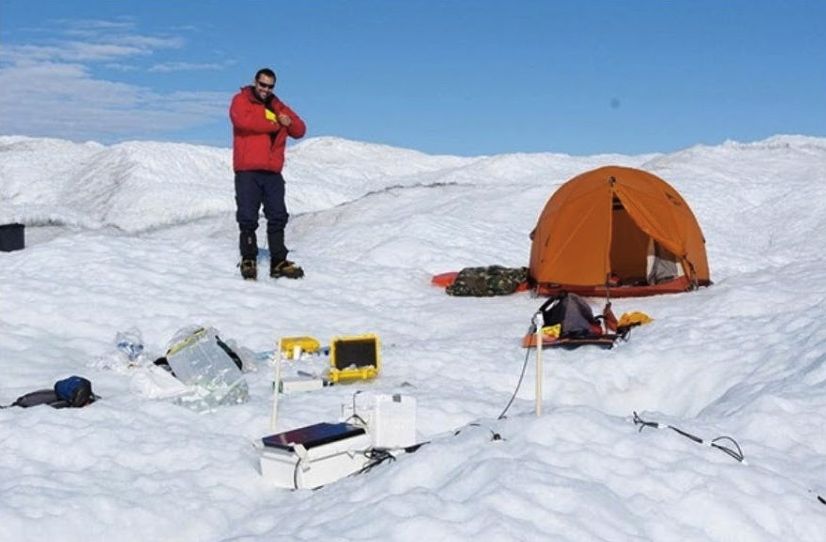
Anesio’s findings weren’t necessarily what you would expect of a body of freshwater. Most ponds and lakes generally release more carbon dioxide into the atmosphere through the decomposition of organic material than they absorb through photosynthesis.
This is because most ponds and lakes sit in forests and receive a steady flow of animal and plant remains from those forests through groundwater. As a result, ponds and lakes often contain a lot of decomposable material, and decomposition often occurs more prevalently than photosynthesis does, Anesio explains.
Cryoconite holes, on the other hand, are isolated from forests—sometimes by tens of hundreds of miles—and receive the majority of their organic material through flecks of airborne debris. There isn’t as much material to break down, so photosynthesizing organisms tend to dominate, Anesio says.
It doesn't take much to flip that scenario, though. If the sediment within the holes becomes too thick, sunlight can't reach the bottom. This limits photosynthesis and the rate of decomposition starts to take over.
“All of these dynamics are very dependent on the ice movement and the relief of the ice,” Anesio says. This can change on a day-to-day and season-to-season basis. “Sometimes you have a lot of melting and you redistribute the granules around in thinner layers, or sometimes they accumulate in certain parts of the glacier.”
Anesio’s team will try to address the question of how these holes change over time by sleeping next to them and monitoring their activity day in and day out this summer.
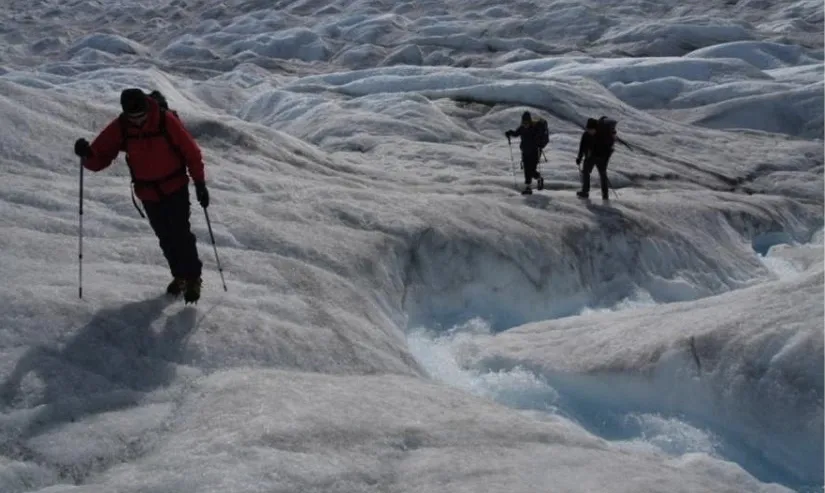
Travel to the opposite end of the world from Anesio's field site, and you’ll find another feature of glaciers that could play an important role in Earth’s climate: massive lakes, buried beneath up to 2.5 miles of Antarctic ice.
These hidden lakes, some comparable in size to North America’s Great Lakes, have caught the attention of researchers like Anesio and Wadham in recent years for several reasons. For one, these lakes contain water that has been trapped for millions of years, harboring extreme life that has never been exposed to human influences.
The lakes may also be storing large volumes of the potent greenhouse gas methane, frozen in a form called methane hydrates. If Antarctica's ice sheets collapse, it would expose these hydrates, inundating them with seawater as the ocean washed over portions of the continent. The destabilized hydrates would turn into methane gas bubbles and warm the atmosphere, Wadham and colleagues reported in a study published in Nature in 2012.
Using airborne radar and satellite imaging, researchers have located more than 400 of these so-called subglacial lakes beneath the Antarctic ice sheet over the past 50 years. But it wasn’t until 2013 that an ambitious, international team of researchers successfully drilled a borehole through nearly half a mile of ice to the surface of one of these lakes for the first time.
They successfully drilled again in 2015 in a nearby location, reaching the grounding zone of an ice sheet for the first time ever. The grounding zone is an area where an ice sheet loses contact with land and floats into the sea.
Sediment and water samples researchers collected from the grounding zone will provide the team with new insights into the stability of the West Antarctic Ice Sheet and its potential to increase global sea levels if it collapses. The team will also measure the microbial activity in these sediments to better understand the role of these buried microbes in the global carbon cycle.
Slawek Tulaczyk, a researcher at the University of California, Santa Cruz who was one of the lead scientists in these milestone achievements, describes the tension of waiting for their equipment to arrive at their drill site in 2013, after more than five years of planning with roughly 50 international collaborators.
The researchers arranged for their equipment—cumulatively weighing about 300,000 pounds—to travel within 12 shipping containers across 800 miles of ice sheet to reach the subglacial Lake Whillans in southwest Antarctica. Shallower than other subglacial lakes, Whillans provided researchers with a decent chance for success due to its relative accessibility compared to other lakes buried beneath miles of ice.
It took truck drivers two weeks to haul the equipment—some of it extremely delicate—to the drill site. All the scientists could do was wait back at the McMurdo Research Station and listen as the truck operators called in with their reports.
“We heard some horror stories,” Tulaczyk says, explaining that the drivers called in to report broken items and requesting extra welding supplies. Luckily, most of the damage was isolated to the shipping containers and not their contents.
“When we flew in, what was inside the containers survived well enough for us to use it, but the containers themselves were pretty beat up and looked like they went through a lot,” Tulaczyk says.
Tulaczyk and colleagues rigged up something called a hot water drill to access Lake Whillans. Over the course of 24 hours, the researchers bored a hole about a foot in diameter by pumping hot water forcefully downward and circulating it so that, as it deepened, the hole didn’t freeze in on itself.
Once they successfully reached the surface of the lake, the researchers sent probes down the hole to collect data and samples. But they had to do so carefully and cleanly. If they contaminated any of their equipment, they ran the risk of collecting modern microbes that would confuse their findings and mar an otherwise pristine habitat.
To their excitement and relief, the team found evidence of microbes living in the water, Tulaczyk says. There had been moments along the way that the team worried they had slogged through years of planning and spent millions of dollars in an effort to reach a lifeless void.
Their findings help support the idea that large volumes of microbially derived methane hydrates could sit beneath the Antarctic ice sheet. The microbes could be producing this methane by decomposing ancient forests and other organic material beneath the ice, Wadham, Anesio, Tulaczyk and colleagues proposed in their 2012 Nature report.
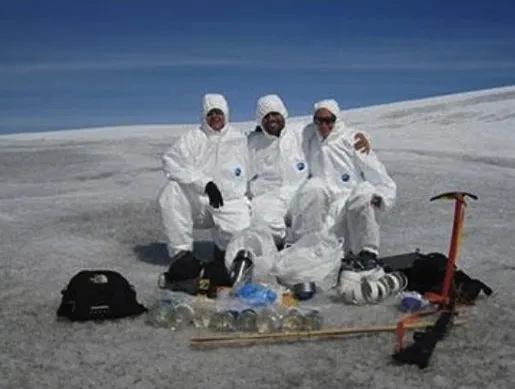
Using estimates based on measurements from sediments collected beneath the Greenland ice sheet—a comparable but much thinner analog to the Antarctic ice sheet—the team calculated that there could be as much as 3.9 million imperial tons of methane hidden beneath the Antarctic ice.
Given the potency of methane as a greenhouse gas, this could be a problem for Earth's atmosphere if a large portion of the ice sheet were to melt away. And, according to estimates by researchers at the University of Massachusetts, Amherst and Pennsylvania State University, this could happen by the end of the century.
Martin Siegert, a glaciologist at Imperial College London, was part of the team that described a subglacial lake for the first time in 1996. He says that estimates of how much methane sit beneath the Antarctic ice are theoretically plausible.
However, the researchers would need to measure the microbial activity in wet sediments beneath the ice sheets to firm up their hypothesis, Siegert says. “It’s pretty simple, the type of science you need to do, the difficulty is getting down there and the hot water drilling.”
Even if the estimates of the ice sheet collapsing by the end of the century were correct, however, it would likely take much longer than that for the effect of methane hydrates to become detectable in the atmosphere, says Alexey Portnov, a researcher at the Arctic University of Tromsø in Norway. Portnov studies the remnants of methane hydrates exposed at the end of the last ice age in the Arctic, as well as methane hydrates currently thawing out of Arctic permafrost today. He says that even if methane hydrates were resting beneath the Antarctic Ice Sheet, and they became destabilized and started bubbling methane up through the seawater to the surface, it would take hundreds of years for these methane reserves to have a detectable impact on global climate.
“Ice caps are collapsing faster and faster in recent years,” says Portnov. “But still, to get the amount of methane from those gas hydrates to somehow change the climate, it will take quite some time.”
Meanwhile, methane hydrates thawing from permafrost and along shallow seafloor ridges are already releasing this greenhouse gas into the atmosphere at significant rates, Portnov says. Ice sheets are just one of many frozen methane stores that are thawing out.
The next step for the subglacial methane hydrate work will be to secure more funding to embark on another drilling expedition to a deeper lake. Previous efforts — such as the multimillion-dollar effort to drill into Lake Ellsworth in 2012 — have failed. So, before trying to access deeper lakes with existing equipment, researchers and engineers must collaborate to develop new techniques for deeper projects.
“We just have to get there and get the samples,” says Wadham. “That’s one of the challenges of the next two decades.”
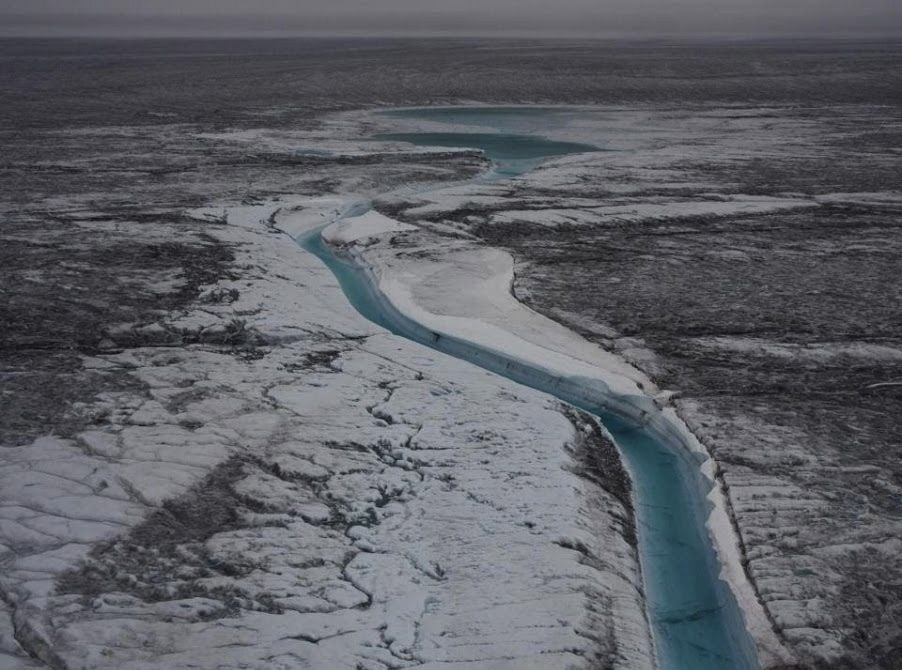
While glaciers and ice sheets may physically plug large stores of buried methane hydrates or pull carbon dioxide out of the atmosphere through millions of small holes, their impacts reach much further than their physical footprint.
For example, when cryoconite holes melt deep enough to drain out the bottom of a glacier, their contents can eventually reach the ocean, flushing nutrients into the marine ecosystem. This can cause large-scale algae blooms that could pull carbon dioxide out of the atmosphere in proportions significantly greater than whatever the microbes in those holes could pull down, Anesio says.
“That would have a much stronger global impact because carbon fixation in the ocean has a tremendous impact on the global carbon cycle,” he says.
Although a complete picture of how glacier microbes affect Earth's climate is years away, Anesio and his fellow polar researchers push onward. Dealing with technological issues and harsh environments often mean their breakthroughs come in fits and starts. But it’s the challenges, both intellectual and physical, that draw the scientists to these frozen landscapes.
“It’s just so beautiful to be there, it’s amazing,” says Anesio. “The dimensions and the scale of things are so big, the rivers and the water and the shape of the ice. I really look forward to going there.”
Cook, at the University of Sheffield, agrees. He finds fields of cryoconite holes as far as the eye can see to be quite a striking image.
“Looking into the cryoconite holes is strangely beautiful,” Cook says. “It’s very serene and it’s incredible to see something that is so simple on the face of it that it sort of belies the incredible complexity of what is going on. It’s sort of hypnotic.”
